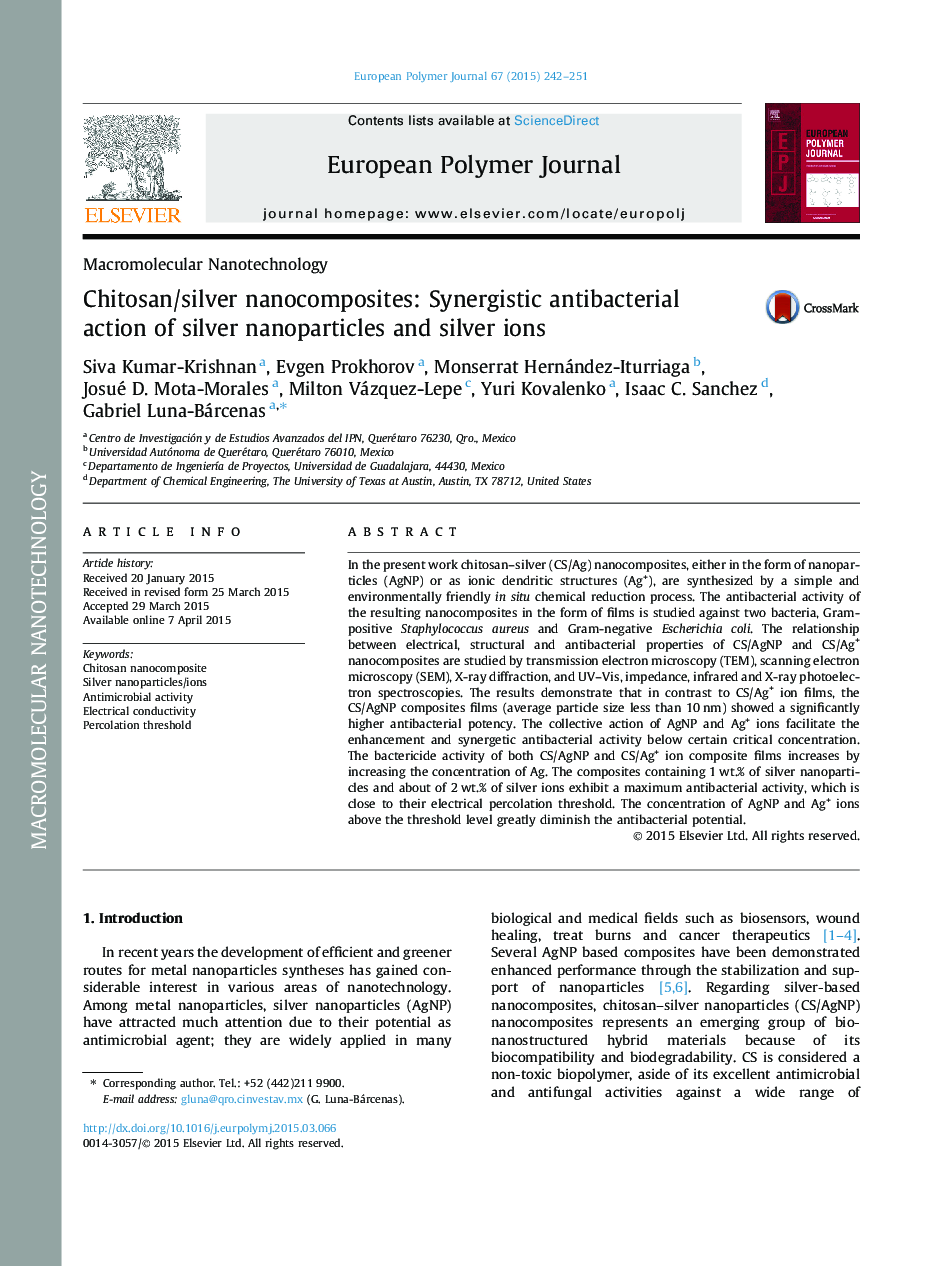| کد مقاله | کد نشریه | سال انتشار | مقاله انگلیسی | نسخه تمام متن |
|---|---|---|---|---|
| 1400427 | 1501368 | 2015 | 10 صفحه PDF | دانلود رایگان |
• A green chemistry approach to produce chitosan–Ag nanocomposites.
• Electrical, structural and antibacterial properties are highly correlated.
• Bactericide potency studied against S. aureus and E. coli.
• Chitosan–Ag films (<10 nm) exhibited highest bactericide potency.
In the present work chitosan–silver (CS/Ag) nanocomposites, either in the form of nanoparticles (AgNP) or as ionic dendritic structures (Ag+), are synthesized by a simple and environmentally friendly in situ chemical reduction process. The antibacterial activity of the resulting nanocomposites in the form of films is studied against two bacteria, Gram-positive Staphylococcus aureus and Gram-negative Escherichia coli. The relationship between electrical, structural and antibacterial properties of CS/AgNP and CS/Ag+ nanocomposites are studied by transmission electron microscopy (TEM), scanning electron microscopy (SEM), X-ray diffraction, and UV–Vis, impedance, infrared and X-ray photoelectron spectroscopies. The results demonstrate that in contrast to CS/Ag+ ion films, the CS/AgNP composites films (average particle size less than 10 nm) showed a significantly higher antibacterial potency. The collective action of AgNP and Ag+ ions facilitate the enhancement and synergetic antibacterial activity below certain critical concentration. The bactericide activity of both CS/AgNP and CS/Ag+ ion composite films increases by increasing the concentration of Ag. The composites containing 1 wt.% of silver nanoparticles and about of 2 wt.% of silver ions exhibit a maximum antibacterial activity, which is close to their electrical percolation threshold. The concentration of AgNP and Ag+ ions above the threshold level greatly diminish the antibacterial potential.
Chitosan–Ag nanocomposites; the optimum concentration of AgNP’s for the inhibition of microorganism’s growth is close to the percolation threshold of ca. 1 wt.% (a1, a2). Note Ag concentration shifts to ca. 2 wt.% for chitosan–Ag ion films (b1, b2).Figure optionsDownload as PowerPoint slide
Journal: European Polymer Journal - Volume 67, June 2015, Pages 242–251
